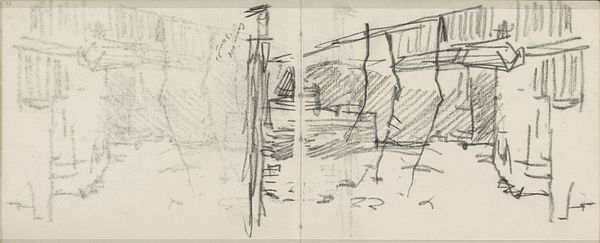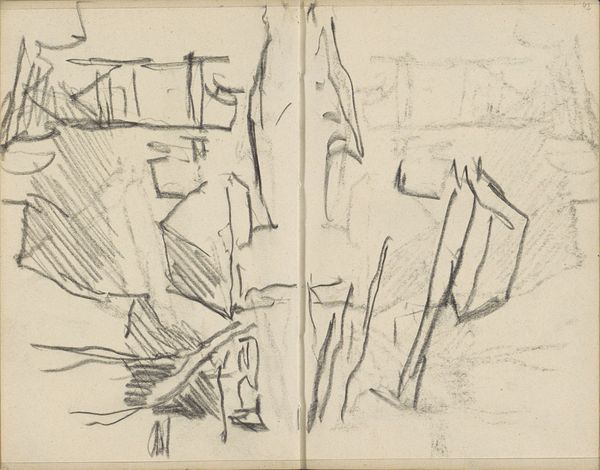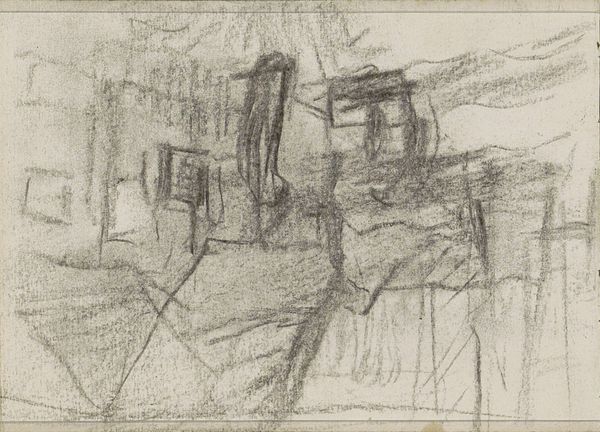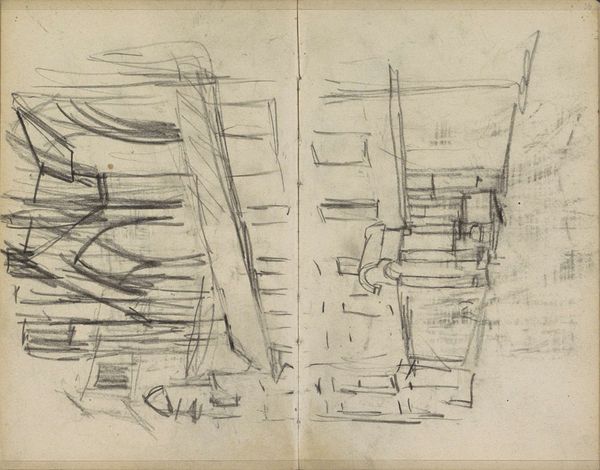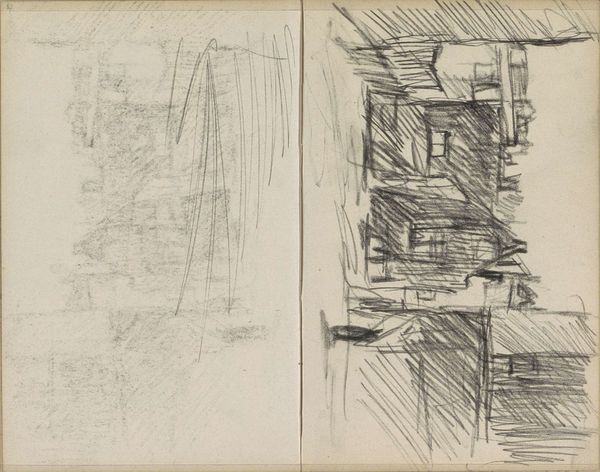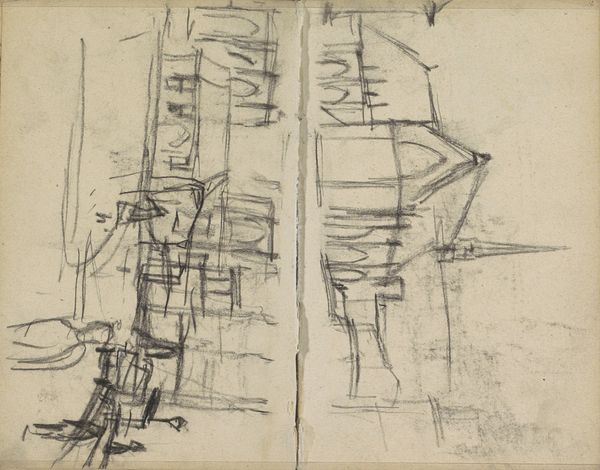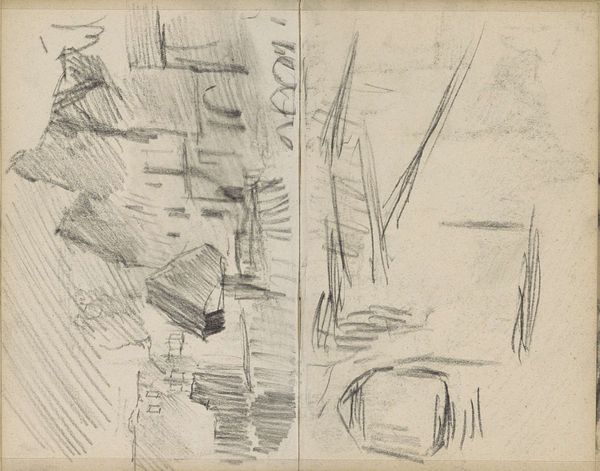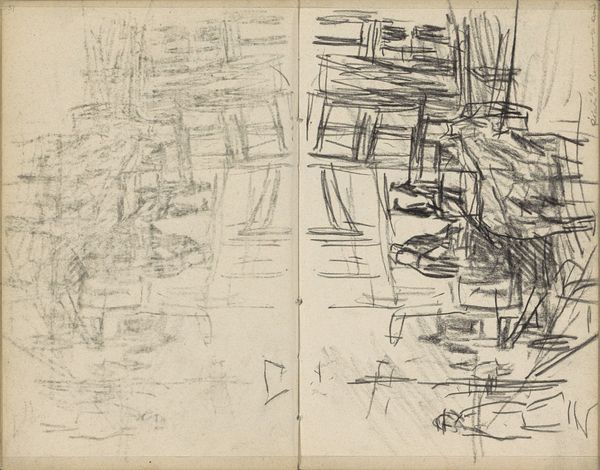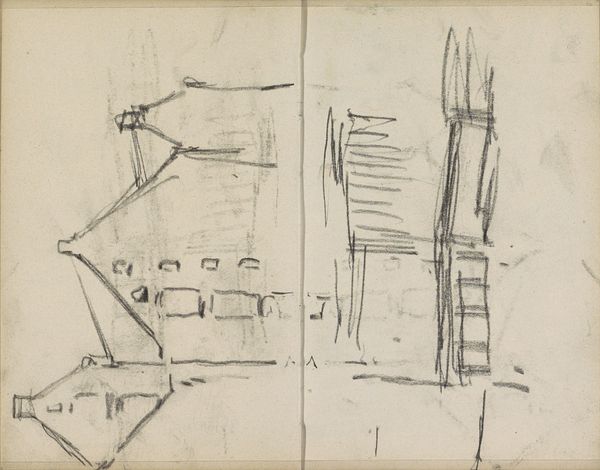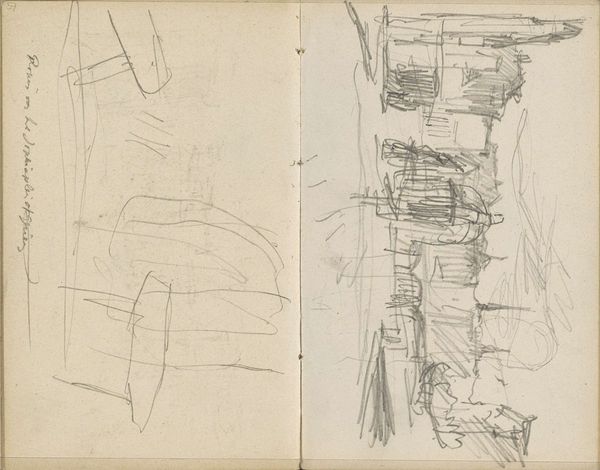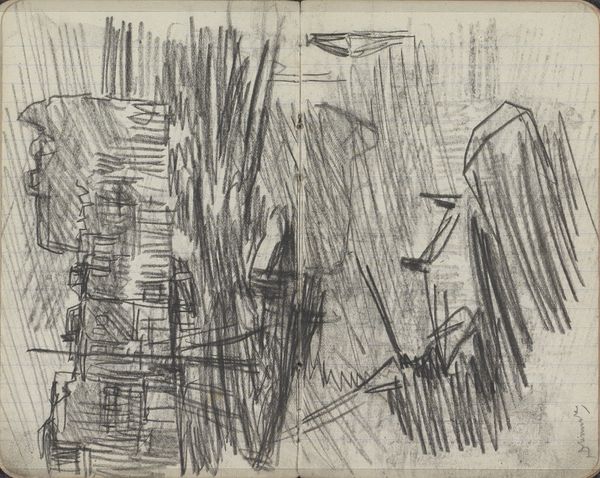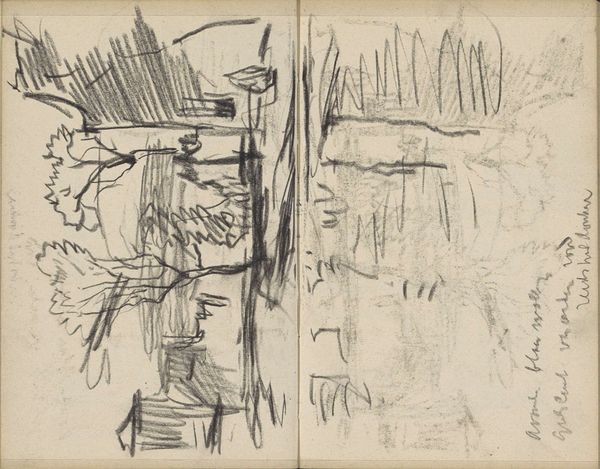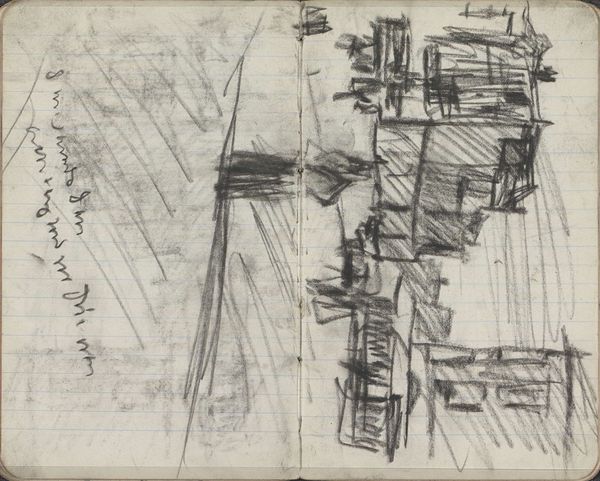
Copyright: Rijks Museum: Open Domain
Curator: Here we have George Hendrik Breitner’s “Gezicht in Amsterdam,” a graphite and pencil drawing, made sometime between 1886 and 1903. It’s currently held here at the Rijksmuseum. Editor: Wow, it’s…raw. Stark. Like a memory half-formed, a fleeting impression caught on paper. The scribbled lines vibrate with energy, a kind of anxious urgency, I think. Curator: Breitner was fascinated with capturing the bustling energy of Amsterdam, embracing the gritty realities of urban life. Unlike more picturesque depictions, he zeroed in on movement and the fleeting moment, heavily influenced by Impressionism and photography, you know. Editor: It certainly has that snapshot quality, like a quick sketch done on the spot. I'm imagining him, notebook in hand, barely pausing as the city swirls around him. You get a strong sense of transience. This work reflects the everyday experience. Curator: Indeed. And look at how he uses those layered lines to create depth, and a sense of atmosphere—it’s almost like you can feel the dampness in the air, imagine the clatter of hooves and the murmur of voices. Breitner wasn't aiming for idealized beauty; instead, he was trying to present an honest view of Amsterdam life. It should be seen as one among the first real examples of impressionistic art from that area and era. Editor: But what exactly *are* we seeing? It's so impressionistic, those shapes could be almost anything… are those buildings, or perhaps the skeleton of something larger under construction? There's an appealing ambiguity. I have this feeling about industrial expansion, you know. The urban underbelly taking over the quiet landscape. Curator: Absolutely! Breitner aimed to capture modernity itself, this rapid change and urban dynamism in the late 19th century. Amsterdam was growing rapidly, with new constructions altering the cityscape every day. This sketch feels like he's grasping at that change, that constant becoming. Editor: It’s fascinating to see such an unfinished piece preserved. So much art history concentrates on perfect finishes but rarely do you get to see an artist's initial response so transparently. Curator: It lets us consider the layers of meaning beneath polished surfaces. It offers something so much rawer. Editor: Right! Well, it’s given me a different perspective, an invitation to think of art not as a final product, but a dynamic reaction. Curator: Agreed! It is a view of the past with one clear foot in the present, isn't it?
Comments
No comments
Be the first to comment and join the conversation on the ultimate creative platform.
